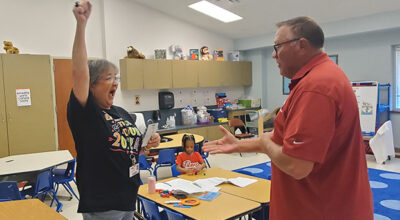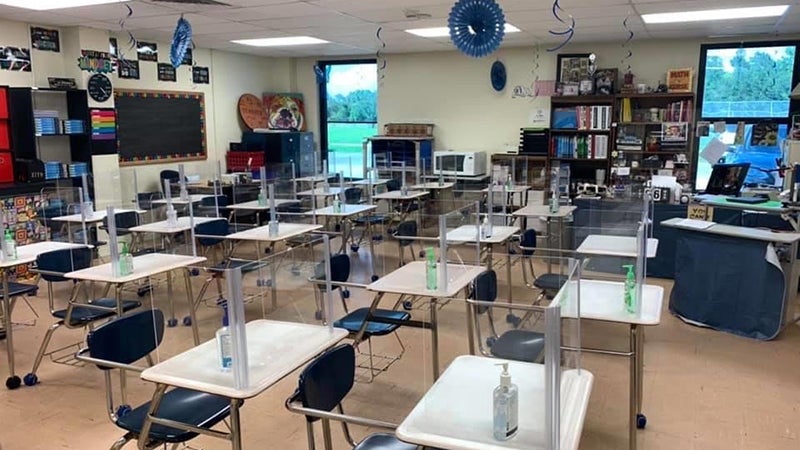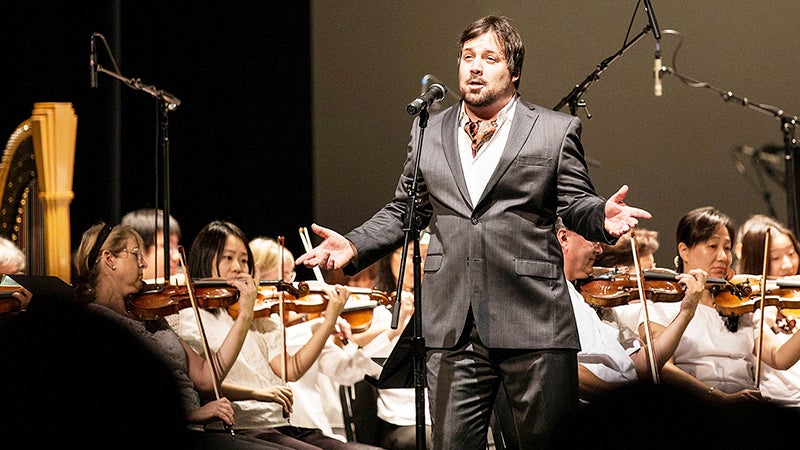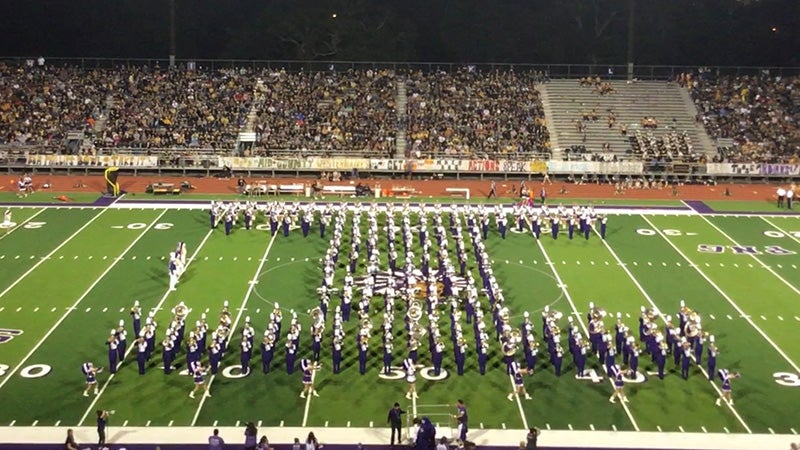PAISD social work: Treating trauma through sharing
Published 10:59 am Monday, February 5, 2018
By Lorenzo Salinas
Port Arthur Independent School District students and staff were affected greatly by Hurricane and Tropical Storm Harvey. That’s required a concerted effort by the district’s teachers, staff and the two social workers to address emotional trauma.
Annie Barkers is the social worker for secondary students and Priscilla Yowman is the social worker for elementary students. They regularly see to the needs of a district that had 8,921 students last June. Now, they provide services to an estimated 8,269 students as January.
Fortunately, they do not work alone and are aided by school staff as well as a rotating roster of fellow specialists from outside the district’s purview.
Identifying the need
Barkers said the district has done a modified version of the McKinney—Vento Homeless Assistance Act, where federal money is directed toward homeless shelter programs.
“Every student in the school district and all the staff had to fill out a form for it,” she said. “It goes through several categories.”
Barkers explained that when most people think of the homeless population, they think of people living under a bridge. But that represents only part of the wider community of friends, neighbors and families who have had to deal with displacement after Harvey.
“What’s going on in our area is that we have people living in temporary living spaces, possibly with relatives, friends, at hotels or those who were previously living in tents and makeshift shelters,” she said.
Accordingly, the family or individuals who find themselves in such conditions could be more vulnerable to mental trauma than those who had not lost their homes.
Barkers and Yowman said every student, parent or guardian is asked to fill out forms detailing information that lets the district know who’s at risk and who needs assistance.
Yowman listed some potential signs teachers, parents or friends should be on the lookout for students troubled by trauma: changes in grades, being more quiet or withdrawn and having more problems dealing with everyday occurrences like school or home life.
“Some take it in opposite ways and act in more boisterous ways,” Barkers said. “They use it as a phase of covering up what’s really going on underneath.”
Common hurdles
In the social workers’ experience, one of the most common types of trauma they’ve witnessed involved coming to terms with their ordeals.
“One thing is that actual accepting that this actually happened and where to go from here,” Barkers said. “A lot of people experience anxiety and frustrations — ‘How am I going to replace what I lost?’
“Some lost jobs, some lost everything; but they didn’t lose everything — they still have their life.”
Barkers and Yowman explained how difficult it could be for residents to navigate the bureaucratic hurdles of FEMA, finances and state aid in efforts to get their homes and lives back together.
“People could have frustration over deadlines, contractors and checking to make sure they have proper licenses and records,” Barkers said.
The social workers mentioned that the district helps families navigate some of those hurdles, and thereby relieve some stress for them.
Youngest at risk
“The staff came back ready and willing,” Yowman said. “Regardless of what they’re experiencing, they help students get back to normalcy. I think that helped a lot.”
In dealing with elementary-age students, Yowman is in a unique position to evaluate the impact of Harvey-related traumas on some of the youngest members of the community.
“The parents are focused on the homes, and the children… Some come in very stressed. They spend their days listening to their parents’ problems and they become very stressed.”
Yowman said school helps students cope with that stress by providing something else to focus on and by virtue of being in a supportive environment.
“When they came to school, they had something else to focus on. The teachers are helpful… They provide comfort and let (students) share their experiences.”
Community support
Barkers likened much of what students, staff and families had to deal with in the aftermath of Harvey to the five stages of grief over the death of a loved one or one’s own impending mortality.
“It’s like a kind of death, but a different type of death,” she said.
Yowman posited that sharing emotionally with others and disseminating helpful information within a supportive community was a proven method of dealing with that kind of trauma and moving on.
“I think people were helpful with sharing,” Yowman said. “Sharing that information really helped. We also posted that information online.”
Barkers said the district has worked with — and continues to do so — other outside organizations like churches, nonprofits and city police to better canvas affected neighborhoods where trauma victims may reside and to give out helpful information. In addition, they help mark families for those that may need a stronger helping hand.
Yowman mentioned volunteers in particular who donated their time, effort or money to affected families in the region. That kind of charity work actually helped those families in more ways than just material; it helped ease the burden of knowing where they might sleep next, for instance.
“I have stories about a couple of families who have come in, completely restored their homes, brought in beds… and generally tried to bring some normalcy to their lives,” Yowman said.
According to her, many of these volunteers keep in contact with her, asking her for another family and another household that may need their services.
Healing through sharing
Barkers and Yowman highlighted the holistic approach they and the district take in treating students and staff.
“There’s the physical, mental and spiritual aspect. All of that plays together,” Barkers said. “It’s like a cycle.”
The workers listed the physical, emotional, behavioral, spiritual and social factors as vital when considering the overall health and function of the school population.
Barkers described an executive meeting session of school principals that took place right after Harvey. In it, principals were given guidelines of how to proceed with classes and students and what evaluative measures would be available to them.
Of note, however, the staff present was able to process some of their own feelings for what they had just been through by sharing those experiences
“We had the opportunity to share how we were affected with Harvey,” Barkers said. “And some of it was pretty emotional, but we embraced each other. Then we came up with, ‘We’re still working on ourselves; but, tomorrow our teachers will come.’”
When the next meeting was held, the same opportunity to process and share was afforded to teachers.
“We thought the executive meeting was something,” Barkers said. “But when the teachers shared and embraced each other…”
She expressed that there were harrowing accounts from individuals, but also some uplifting tales that played a positive part in their meetings. It also provided a guideline on how to progress in the classroom for teachers under duress.
“We need to meet student needs, but if we feel our teachers need a break, they could get a hall monitor to come in while they go out and get what they need done,” Barkers said.
Calling out for assistance
PAISD schools regularly give out announcements each day regarding general health information and who and where students (or staff) could find it.
In addition, the district has entities from counseling groups who come in once a week to see any students or teachers who want to be seen.
“We reach out to regional specialists,” Barkers said. “One specific one is coming each week to share with students or to share with parents.”
Barkers and Yowman work with other entities such as the city of Port Arthur, Gulf Coast Health Center and Spindletop Center to provide services to those in need.
“Most of the time I get referrals,” Yowman said. “Some teachers notice students who have issues. Once we sit down and talk with the students, we kind of know what’s going on.”
Barkers said they listen carefully to what students have to say and then make an assessment on if they need immediate attention or if they could refer them to another appropriate party.
“We get background information and try to form an understanding,” Barkers said. “There’s that process and we try to meet that immediate need… Then we do a follow-up on that.”
Helping at home
Memorial High School principal Glenn Mitchell said the district and the high school have made special provisions for students in need in aspects like attendance, dress code and an extra lunch.
“When you see a kid ask for another plate in the cafeteria, they’re not necessarily trying to be greedy,” Mitchell said. “For many, that may be the only source of nutrition they’ll be getting for the day.”
Mitchell said the high school presents an “unsung hero” recognition each month with both students and staff. The award is for someone who has gone above and beyond the normal scope of their duties during the school session.
Again, it is a reinforcement of community and shared values that would seem to bolster everyone involved.
“We’re still trying to stay on target,” Barkers said. “Our PTAs are still active; our communities are still working with police departments, churches and other groups. We’re still just trying to link it all together.
“We’re trying to make decisions for what is best to do at the time. We’re just trying to meet the immediate needs of the person.”





